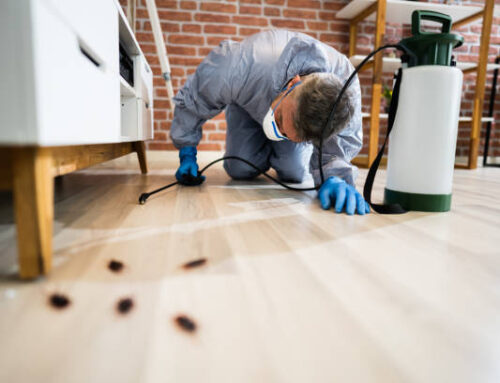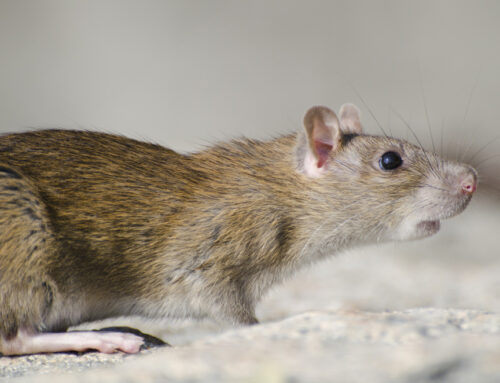As temperatures drop, homes become prime shelters for mice seeking warmth, food, and protection from the cold. These small rodents are persistent, resourceful, and capable of fitting through gaps as narrow as a dime. Once inside, they reproduce quickly, contaminate food, and gnaw through wiring, insulation, and structural materials. Effective rodent control during cold weather requires understanding their behavior, sealing entry points, and maintaining a preventive plan that keeps infestations from developing.
Professionals emphasize that winter infestations rarely happen by chance. Mice take advantage of the smallest vulnerabilities in a property’s structure, following warmth, scent, and airflow to locate entry points. Knowing where and how they enter is essential to preventing long-term infestations.

Common Entry Points for Mice
Mice are opportunistic and methodical when seeking indoor shelter. They use existing cracks, unsealed joints, and gaps that often go unnoticed. A few small structural imperfections can lead to an entire colony settling indoors. Typical access points include:
- Gaps around utility lines and pipes: Mice follow plumbing and electrical conduits that pass through walls, squeezing through unsealed openings.
- Foundation cracks and basement vents: Damaged masonry, vents, and weak points around the foundation create easy access to basements and crawlspaces.
- Unsealed doors and garage frames: Missing weather stripping or door sweeps allow mice to slip inside during nighttime hours.
- Roof edges and attic vents: Mice climb exterior walls or nearby tree branches to reach openings at the roofline, eaves, or vent screens.
- Drains and HVAC lines: Utility chases and air ducts act as hidden highways once they breach the initial barrier.
Regular inspections and weatherproofing help minimize these weak points. Detailed guidance for homeowners preparing for winter can be found in our pest-proofing checklist for winter, which explains how small repairs can prevent major rodent issues later.
Why Cold Weather Increases Rodent Activity
Rodent populations spike in colder months, not because they suddenly multiply but because they migrate indoors to survive. As outdoor temperatures drop, their natural food sources, such as seeds, plants, and insects, become scarce. The warmth and shelter of homes, combined with consistent food access, create ideal survival conditions.
Inside, mice target quiet, hidden spaces where they can nest undisturbed. They typically settle behind appliances, inside wall voids, and under insulation. Even small crumbs and stored pet food are enough to sustain an entire colony. Their gnawing behavior, driven by constantly growing teeth, results in damage to wires, furniture, and packaging.
Rodent activity also tends to peak at night. Homeowners may hear scratching sounds behind walls or find droppings near pantries or baseboards. Understanding these patterns helps in early detection and prevents infestations from escalating.
Effective prevention starts before winter. Once the temperature consistently drops, exclusion becomes harder, as mice have already established hidden entryways. Consistent maintenance and pre-season inspections are the most reliable defenses against cold-weather invasions.
Signs That Mice Are Already Indoors
Detecting early mouse activity prevents small infestations from turning into serious structural or health concerns. Mice are secretive, but they leave behind clear evidence of their presence. Key warning signs include:
- Droppings: Small, dark pellets typically found along walls, behind furniture, or near food sources.
- Gnaw marks: Irregular chew marks on baseboards, electrical wiring, cardboard boxes, or food packaging.
- Tracks and grease smears: Oily marks or dust trails along frequently used paths such as floor edges or pipes.
- Nest materials: Shredded paper, insulation, and fabric collected in secluded corners or attic insulation.
- Unusual sounds: Scratching or rustling noises, especially at night when mice are most active.
These indicators suggest established rodent activity and the need for immediate action. While traps may capture a few individuals, they do not eliminate nesting sites or stop new mice from entering. Only a thorough inspection combined with expert exclusion and treatment can resolve an infestation effectively.
Effective Prevention and Long-Term Rodent Control
Preventing mice requires more than reactive trapping. A structured rodent control plan focuses on both exclusion and habitat management, targeting what draws them indoors and what sustains them once inside.
To achieve lasting control:
- Seal all entry points: Use steel wool or wire mesh to block openings larger than a quarter inch.
- Reduce clutter: Storage areas with boxes, papers, or old fabric provide nesting materials and cover.
- Maintain cleanliness: Store food in airtight containers, wipe up crumbs, and empty trash frequently.
- Manage exterior conditions: Keep firewood and vegetation at least two feet from the home’s foundation.
- Address moisture issues: Fix leaks and avoid standing water that may attract both rodents and insects.
Regular maintenance supports lasting results, but infestations often require professional attention. Experts can pinpoint subtle entry points and deploy targeted solutions that homeowners may overlook. DIY efforts can sometimes worsen the problem, as discussed in our detailed piece on calling a professional for rodent issues.
Health and Structural Risks Linked to Mice
Beyond the nuisance, mice pose legitimate health and property hazards. Their droppings and urine contaminate surfaces and food, transmitting diseases such as salmonella and hantavirus. They also carry parasites like mites and fleas that spread to pets and humans.
From a structural standpoint, mice can cause expensive damage. Constant gnawing wears down wood, insulation, and electrical wiring, increasing fire risk. Nesting inside HVAC systems can compromise air quality and efficiency. Over time, these small but persistent pests create cumulative wear that leads to higher repair and energy costs.
Professional rodent control programs use targeted approaches that minimize risk while protecting both health and property. Unlike one-time trapping or surface cleaning, these programs include inspection, exclusion, and safe product application to ensure full eradication and prevention.
Protect Your Property Before Winter Hits
Cold weather should never catch property owners off guard. With the right preventive steps and expert care, homes stay protected from mice and other rodents all season long. For lasting results and professional inspection, contact E&G Exterminators to design a customized rodent control plan for your property.






